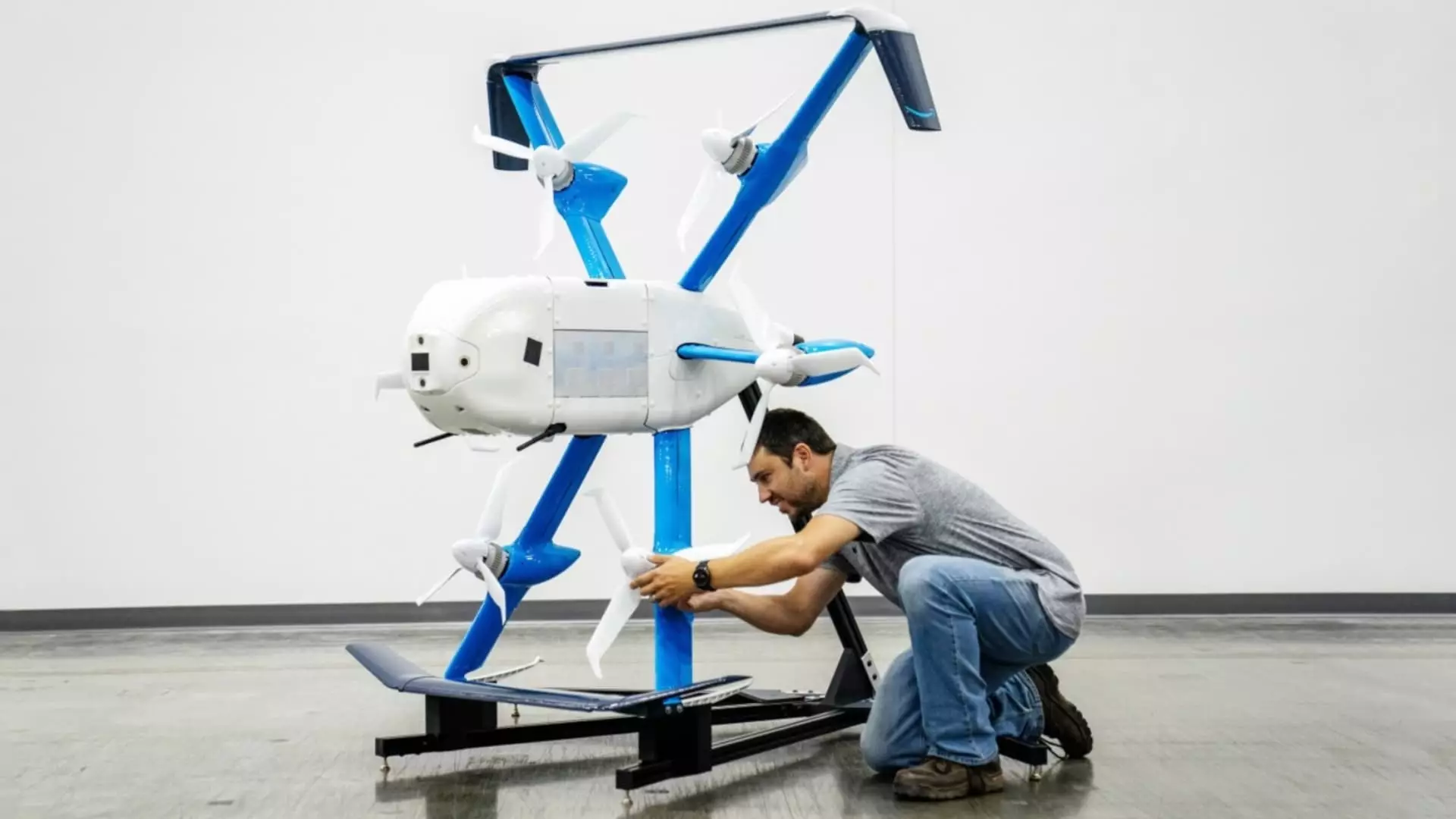In a significant advancement for its drone delivery initiative, Amazon announced on Tuesday that it has received regulatory approval to launch its latest drone model, the MK30. This development comes nearly a year after the drone was unveiled in November 2022, designed specifically to enhance delivery capabilities in urban environments. The MK30 is touted as not only quieter and more efficient than its predecessors, but also capable of flying through light rain and boasting a range that is twice as extensive as earlier models. This progress marks an important pivot for Amazon, as the company seeks to revitalize its Prime Air program, which has faced numerous setbacks over the years.
The Federal Aviation Administration (FAA) has granted Amazon permission to operate the MK30 beyond typical visual lines of sight and over longer distances. This sort of authorization is crucial as it allows for a more flexible and ambitious operational strategy. While a prior waiver for Prime Air was limited to specific test areas like College Station, Texas, the new approval opens the door for broader testing, which is critical for refining the system and preparing for a full-scale rollout.
On the heels of this FAA approval, Amazon is strategically deploying its drone delivery services in Tolleson, Arizona, near one of its fulfillment centers. This decision follows the closure of an earlier test site in Lockeford, California, which signifies a shift in focus for the company. By integrating drone deliveries into an existing logistics network, Amazon aims to streamline its operations and enhance the efficiency of its last-mile deliveries. The service activation in Arizona is indicative of Amazon’s commitment to operationalize its drone delivery capabilities while maintaining close ties with its logistical frameworks.
Matt McCardle, the head of regulatory affairs for Prime Air, highlighted this milestone, noting that the launch is set to begin as early as Tuesday, leveraging insights gained from previous testing phases. Amazon’s choice of Arizona as a testing ground is also strategic due to the favorable weather conditions and regulations compared to other states, providing an optimal environment for drone performance assessments.
Despite Amazon’s significant financial investment into the Prime Air program, progress has not come without its hurdles. For over a decade, the vision of a widespread drone delivery network has seen numerous missed targets and regulatory challenges. The recent history of Prime Air includes layoffs, shifts in leadership, and a reevaluation of operational strategies. The departure of key executives who facilitated relations with regulatory bodies has raised concerns about the program’s path forward.
Furthermore, community reception has been mixed, with some residents voicing concerns about noise pollution and privacy. In College Station, complaints regarding drone noise reached municipal authorities, prompting the mayor to bring these issues to the attention of the FAA. In response, Amazon committed to relocating its drone delivery launch site by the end of 2025, illustrating its intent to balance technological advancement with community concerns.
Amazon’s drone delivery journey is not unfolding in isolation; it faces stiff competition from both established logistics companies and innovative startups. Companies such as Wing, a subsidiary of Alphabet, and UPS are actively developing their drone systems, while new entrants like Zipline and Matternet introduce fresh perspectives on the delivery landscape. This competitive tension adds urgency to Amazon’s efforts, compelling it to accelerate progress in a rapidly evolving field.
As Amazon prepares to take its first steps in a larger rollout of the MK30, the coming months will be pivotal. Successful integration into existing logistics operations, alongside securing community goodwill, will determine whether the ambitious vision laid out by Jeff Bezos over a decade ago can indeed take flight. In this complex interplay of innovation, regulation, and community dynamics, Amazon’s drone delivery ambitions reflect broader trends in technology and consumer demand for rapid, reliable delivery solutions. The road ahead is undoubtedly filled with challenges, but the commitment to advancing drone technology remains clear.

